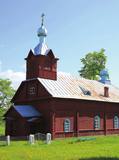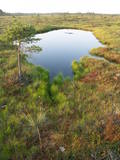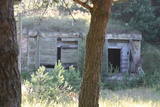| Нo | Название | Описание |
|---|---|---|
|
Кафе «Иевиня» находится в историческом центре Тукумса. Предлагаются латышские лакомства - булочки, открытые пироги и пироги. |
||
|
Находится в Лаши, в 0,2 км от дороги Вецумниеки – Илуксте. Древнее городище селов, заселенное с первоготысячелетиядорождестваХристова до 10 - 12 столетия. В наши дни в городище видны ничтожные остатки комплекса бывшей Вецлашской (Тизенхаузенов) господской усадьбы (внушительный господский дом был построен в конце 19 века в неоготическом стиле), из которого сохранилось хозяйственное строение, фундамент господского дома, фрагменты ворот и парк. До 1920 года господская усадьба принадлежала роду графов Пшездзецких (перед этим - Тизенхаузенам, Фитингхоффам). Перед тем, как отправляться к этому месту, в Интернете стоит найти старинные фотоснимки господского дома. К сожалению, в течение последних 20 лет этот памятник культуры не пережил каких-то значительных работ по благоустройству. |
||
|
Расположенный на берегу красивой реки Навести хутор Энергия — крупнейшее в Эстонии предприятие, занимающееся экологическим выращиванием и обработкой лекарственных растений. На хуторе располагается крупнейший центр лекарственных растений: учебные тропы лекарственных растений, современный чайный дом, центр проведения семинаров, Эко-спа. Домашнее размещение на хуторе Энергия на самом высоком современном уровне. |
||
|
По старинным торговым путям текли не только товары, но и знания и культура. Путь света связан со священником Эрнстом Глюком (Ernsts Gliks), литератором, переводчиком Библии и основателем школы для латышских детей, а также с гернгутерами – Карлисом Скалбе (Kārlis Skalbe), братьями Каудзитисами (brāļi Kaudzītes), Янисом Поруксом (Jānis Poruks), Антоном Аустриньшем (Antons Austriņš) и их духовным наследием. В Видземе пекут вкусный ржаной, ячменный, пшеничный и гречишный хлеб, а также хлеб из спельты. В тесто добавляют смесь различных семян, тмин, орехи, сухофрукты и конопляное семя. Из конопли готовят традиционную пасту, масло, пики с серым горохом, ее добавляют в конфеты «Коровка» и даже в шоколад. Пшеничную муку раньше использовали только по праздникам, в некоторых местах предлагают научиться печь из нее водяные крендели с солью и тмином. Путь зерна можно проследить в крестьянских хозяйствах и на восстановленных ветряных мельницах. Помимо традиционного Янова сыра попробуйте зеленый сыр и вкусные сыры из козьего молока. Местная гордость – судак из озера Буртниеку, выращенная здесь же форель, сомы и осетры, в сезон в некоторых местах предлагаются раки. Популярны блюда из мяса местной домашней птицы и скота, в том числе из крольчатины. Приусадебные кухни предлагают дичь и фазана с дарами леса и дикорастущими пряностями. В Видземе можно встретить Чесночную королеву и хозяйку, которая готовит порошки из растений. Попробуйте также пирожки, открытые пироги, медовый торт, десерты из взбитого творога, рябины, цидонии, яблок, сливок и ржаного хлеба, яблочные или черничные клецки. Жажду утолят травяные чаи с медом, березовый сок, ягодные лимонады или более крепкие напитки – вкусное пиво и вино. |
||
|
Saimniecības pamatnodarbošanās ir diļļu audzēšana un to pārstrāde. Siltumnīcā audzē arī Itālijas dienvidos zināmu melones un gurķa krustojumu "Carosello", kas latviski nodēvēts par "pūkaino gurķi". Iespējamas degustācijas, kā arī saimniecības produkcijas iegāde. |
||
|
Семейная ферма Жиляй основана, обслуживается и развивается одной семьей. Любознательные отдыхающие, прогуливаясь, могут увидеть, как выглядят белые павлины, фазаны, утки, куры, лошадки пони, французский скот породы Шароле, белые свиньи генофонда Литвы. |
||
|
Atrodas Ventspils Rātslaukuma rietumu pusē iepretim Nikolaja luterāņu baznīcai. Ēkas pirmsākumi ir meklējami 18. gs. 1850. g. tajā atradās pilsētas Rātsnams, kopš 2006. g. - rakstnieku un tulkotāju māja, kurā patstāvīgi uzturas un strādā Latvijas un ārvalstu literāti. |
||
|
Основным видом деятельности хозяйства является производство фруктов - помидоров, яблок, груш, малины, клубники и др. Весной можно увидеть цветущие грушевые деревья, яблоневые сады, малиновые поля, а осенью посетители могут принять участие в большом осеннем сборе плодов со специальными сумками-кенгуру для сбора яблок и контейнерными поездами - вагончиками. |
||
|
Beliebte und eine der ältesten Straßen in Jurmala zwischen Dzintari und Majori. Die 1,1 km lange Straße mit Wirtshäusern, Sommercafés und Souvenirladen. |
||
|
Памятный знак Стабурагсу «Ухо бога» скульптора Солвейги Васильевой был установлен в 2003-м году в парке Виганте на месте, где после образования водохранилища Плявиньской ГЭС был затоплен один из интереснейших геологических памятников природы Латвии. Овитый сказаниями, легендами и рассказами плотовщиков, Стабурагс представлял собой известняковый утес высотой 18,5 метров на левом берегу Даугавского каньона, образовавшегося после последнего ледникового периода. Из скалы Стабурагс вытекал источник Лиепавотс, который тоже был затоплен. Стабурагс и затопленный каньон Даугавы были одними из популярнейших туристических объектов Латвии. |
||
|
Моленная Тискадской старообрядческой общины была построена
в 1886 году и реконструирована в 1905 году. Это здание освящено более
ста лет тому назад. В настоящее время часовня большая и просторная. На
холме над деревней чётко вырисовывается в тени столетних деревьев.
|
||
|
This territory was established to protect the rare tree specie in Latvia - common hornbeam, which covers approximately 4% of the territory, but the most visually interesting part of the area is the Tīrspurvs swamp, also known as the Dunika heath. This is where the visitor will find Latvia’s longest and most impressive swamp footpaths, which crosses the area from the North to the South. Visitors will be fascinated by the unique landscape of the central part of the swamp, where in some places there are not even small swamp pine trees. Various habitats will be found – small swamp lakes, mineral islands, marsh pools, etc., and that is to say nothing of all the birds in the area. |
||
|
Karņicka kalns pēc savas izcelsmes nav kalns, bet gan Daugavas ielejas nogāzes daļa ar labu skatu uz Krāslavas mazstāvu koka apbūvi. Ar šo vietu saistīts traģisks nostāsts par poļu virsnieka Josifa Karņicka un grāfa Plātera meitas mīlestību, kurai nebija lemts piepildīties tā laika „paražu” dēļ. Tā rezultātā abi nelaimīgie nolemj izdarīt pašnāvību. Virsnieks nošaujas, bet Emīliju pēdējā brīdī izglābj kalpone, neļaujot tai izlēkt pa pils logu. J. Karņicka pašnāvības vietā ir uzstādīts piemineklis. Nedaudz tālāk – rietumu virzienā guļ t.s. Austriņa akmens, pie kura 1909. gadā iedvesmojies un radījis latviešu rakstnieks Antons Austriņš. |
||
|
Чудская баржа - специально для условий Чудского озера и реки Эмайыги созданное торговое парусное судно, которые, как известно, строили уже в 14-ом веке. В 2006-ом году после полувекового перерыва опять спустили на Эмайыги баржу, которая получила название "Jõmmu". Баржевая компания Эмайыги организует различные поездки и природные путешествия по Эмайыги и Чудскому озеру."Jõmmu" ожидает и маленьких фанатов водного дела знакомиться с традиционным ремеслом и кораблестроением. |
||
|
Находится в центре Аглоны около Дагдаского шоссе (P 60). Латышская кухня: Свиные котлеты, картофель с селедкой и творогом, творожный крем с клубникой. Особое блюдо: Голубцы. |
||
|
Выращиваемые натуральным способом лекарственные растения, вечера у костра, еда, приготовленная по специально отобранным рецептам. В хозяйстве Energia выращивают лекарственные растения, предлагаются продукты, произведенные из лекарственных растений, а также услуги, позволяющие восполнить недостаток позитивной энергии в организме. |
||
|
The owners have made sure that everyone can buy fresh and processed fishery products from local producers. During the summer, on the terrace, you can listen to Mazupīte's water, enjoy freshly grilled fish, as well as enjoy particularly delicious cakes, coffee and ice cream. |
||
|
В овраге притока Огре разместился мини-зоопарк, большую часть которого занимает вольер с кроликами. В глазах детей его делают привлекательным построенные по архитектурным мотивам господских усадеб и замков домики. Здесь можно увидеть коз, свиней, гусей, павлинов, мандариновых уток и жемчужных кур. Дети могут покормить животных. |
||
|
Во времена Советского Союза задачей 77-й армейской зенитноракетной бригады была противовоздушная оборона внешних границ союза. В настоящее время объект принадлежит самоуправлению края, заброшен, не охраняется и не используется. У главного входа на ракетную базу сохранились интересные ворота.
|
||
|
Lietuvas lielākais sūnu purvs, kura aizsardzības nolūkā ir izveidots Čepkeļu dabas rezervāts (Čepeklių gmatinis rezervatas). Tas izvietojies starp Dzūkijas nacionālā parka dienvidaustrumu daļu un Baltkrieviju. No Marcinkones pa smilšainu meža ceļu (~ 9 km turp - atpakaļ) ar kājām vai divriteni (arī nelielu tūrisma autobusu līdz 20 vietām) var nokļūt līdz purva malai, kur mežainās kāpās un purvā izveidota 1,5 km gara dabas taka un skatu tornis, no kura labi pārredzama purva rietumdaļa. Pirms došanās uz Čepkeļu purvu, ir jāreģistrējas Dzūkijas nacionālā parka apmeklētāju centrā (Šilagėlių gatve 11), kas meklējams aiz dzelzceļa pārbrauktuves. Te apskatāma neliela nacionālajam parkam un rezervātam veltīta ekspozīcija. |
||

























